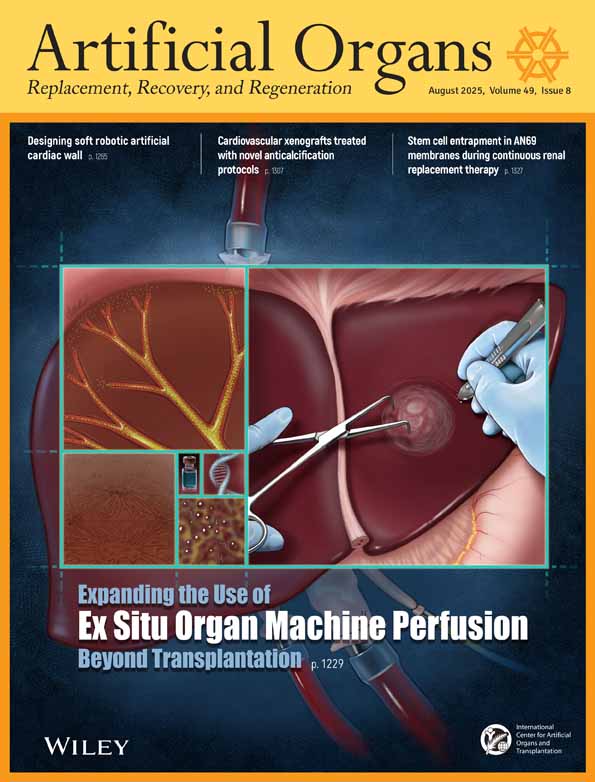Characterization of a Magnetic Bearing System and Fluid Properties for a Continuous Flow Ventricular Assist Device
Presented in part at the 6th Congress of the International Society for Rotary Blood Pumps, July 25–27, 1998, in Park City, Utah, U.S.A.
Abstract
This article presents the performance test results of the CFVAD3 continuous flow blood pump in an artificial human circulation system. The CFVAD3 utilizes magnetic bearings that support a thin pancake impeller, the shape of which allows for a very compact pump whose total axial length is less than 5 cm with a radial length of about 10 cm. This gives a total volume of about 275 cc. The impeller itself has 4 vanes with a designed operating point of 6 L/min at 100 mm Hg of differential pressure and 2,000 rpm. The advantages of magnetic bearings, such as large clearance spaces and no mechanical wear, are elaborated upon. Furthermore, bearing model parameters such as load capacity and current gains are described. These parameters in conjunction with the operating conditions during testing are then used to estimate the fluid forces, stiffness, and damping properties while pumping. Knowledge of these parameters is desirable because of their effects on pump behavior. In addition, a better plant model will allow more robust control algorithms to be devised that can boost pump performance and reliability.




